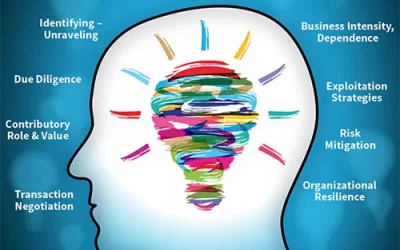Michael D. Moberly September 17, 2012
I believe design thinking, by its nature, will bring to light (produce) more intangible assets than conventional linear and/or milestone-based approaches.
Tim Brown, certainly a well-known and key ‘guru’ of design thinking, cites Thomas Edison’s creation of the electric light bulb as an example that remains a relevant analogy today. As Brown describes it, Edison’s invention of the light bulb, served as one relatively small component of a greater industry which he (Edison) envisioned would come to frame an entire industry. Edison’s genius, reports Brown, lay not merely in inventing a single, relatively discreet ‘parlor trick’ device (i.e., the electric light bulb) rather in his ability to conceive an eventual fully developed marketplace surrounding use of the electric light bulb. Another element of Edison’s genius evolved from his futuristic vision how people would come to want to possess and use the electric light bulb. A process, by the way, he plotted to achieve that insight! The vision Edison espoused, and the approach he applied to achieve that vision, constituted an early example of ‘design thinking’ says Brown. Edison’s visionary marketplace was a system of electric power, i.e., (a.) generation, and (b.) transmission that would render the ‘light bulb’ useful and relevant to people, homeowners, and businesses on a mass scale globally.
By all accounts, Edison was not a narrowly specialized (lone) scientist rather he was a generalist with a keen instinct for business. It was not sufficient for Edison and his colleagues to merely validate a preconceived hypothesis because design thinking does not follow a pre-defined series of sequenced and/or orderly steps. What new things one learns from those iterative steps, in my view, are various complimentary and contributory intangible assets. Thus, the notion that creative ideas suddenly burst from one’s mind already fully formed is seldom the case.
It’s not difficult to see then, that design thinking differs markedly from conventional linear and milestone-based business activities. Instead, design thinking is more often the product of considerable intellectual work whose core is a human-centered process of discovery coupled with iterative cycles of (a.) prototyping, (b.) testing, and (c.) refining. Too, design thinking embodies a system of ‘spaces’ that distinguish various activities that ultimately come to form a ‘continuum of innovation’, i.e., (a.) inspiration, (b.) ideation, and (c.) implementation.
So whether it is referred to as design thinking, business thinking, or creative thinking, it’s a methodology that encompasses the gamut of activities related to innovation, but with a specific and very important twist; that is, it has a people centered (design) focus, influenced, Brown says, by direct observation of what people (presumably prospective consumers)…
- want and need in their lives, and
- what they like and/or dislike about the way particular products are made, packaged, sold, and supported.
More to come…
(Special thanks to Tim Brown’s fine article titled ‘Design Thinking’, Harvard Business Review, June 2008)



